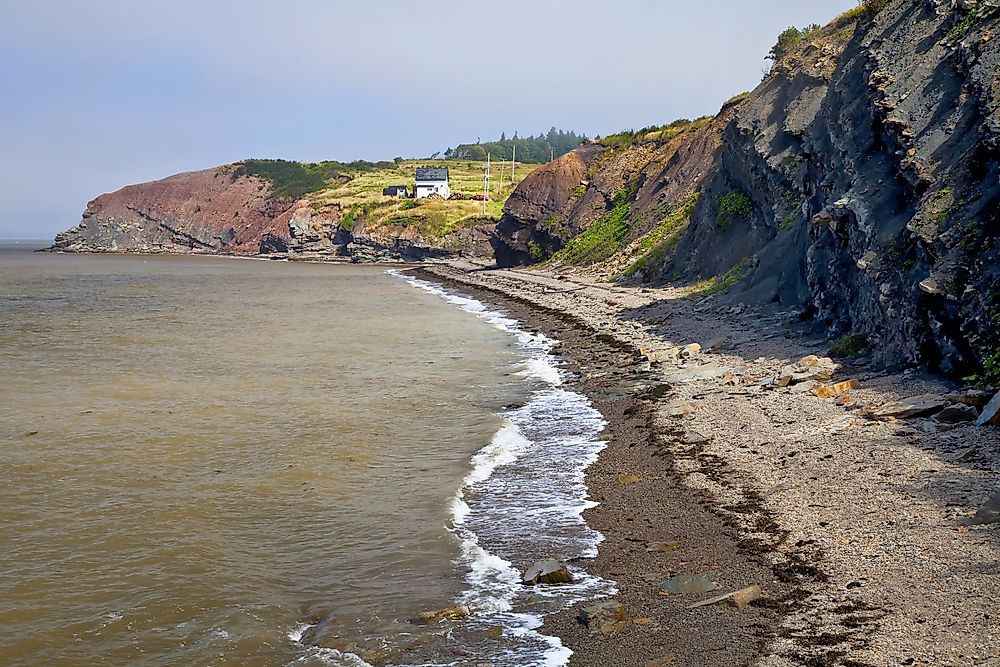Joggins Fossil Cliffs - UNESCO World Heritage Site In Canada

What are the Joggins Fossil Cliffs?
The Joggins Fossil Cliffs are located in the Bay of Fundy in eastern Canada. This paleontological site is home to the most complex collection of 300 million-year-old Carboniferous era fossils in the world. This era is also known as the "Coal Age" because its plant and animal remains now provide the majority of present-day coal deposits. Joggins Fossil Cliffs have been important to researchers for over one hundred years as they offer an insight into prehistoric life on earth. The Bay of Fundy experiences the highest tide levels (up to 43 feet) of any other beach around the globe, which works to erode the cliffsides and expose new fossils. Visitors to this site have been known to find fossils scattered along the beach.
Why Is The Joggins Fossil Cliffs Regarded As A UNESCO World Heritage Site?
The Joggins Fossil Cliffs site is comprised of 9 miles of sea cliffs. The entire site has an area of 1,702.5 acres, which provides a unique opportunity to study prehistoric terrestrial life. Because these sea cliffs hold the largest and most complete Carboniferous fossil records, they are able to give the world invaluable knowledge about major changes in Earth’s evolution. Remains and footprints of early animals as well as the rainforest in which they lived, including 96 genera, 20 footprint groups, and 148 fossilized species, can all be found at this site. Additionally, it is divided into 3 specific ecosystems: floodplain rainforest, estuarine bay, and forested alluvial plain.
One of the most important features of this World Heritage Site is that within its many fossils, researchers have discovered the first reptiles to walk the Earth. These earliest known reptiles have remained one of the most important geological discoveries ever. The fossils here lay within the remains of still standing rainforest trees, surrounded by other plant and animal remains as well. This scenario provides researchers with the opportunity to rebuild these ancient forests that once covered nearly all land surfaces. The amount of information that has come out of the Joggins Fossil Cliffs has led to the creation of several evolutionary and geological principles. This site has played a part in several pieces of academic work, including two famous published works, Principles of Geology and On the Origin of Species, as well as The Great Oxford Debate of 1860.
This site first became important to geologists in 1820. One geologist, in particular, named Sir William Dawson, is responsible for documenting most of the earliest work pertaining to the site. Since his earliest works, many other geologists have come to the Joggins Fossil Cliffs for research. Some of the species discovered here over the years include ferns, calamites, arthropods, amphibians, lepidodendron, and fish.
Management Of Joggins Fossil Cliffs
All levels of the Canadian government are dedicated to preserving and protecting the Joggins Fossil Cliffs. As such, use of this site is regulated by a number of legal documents. This site receives a significant amount of financial backing from public funds, which have recently been used to build a new visitors center. Scientists, museums, local communities, and businesses all work together under a number of agreements to ensure effective management of this important World Heritage Site. Some legal experts have recognized the management of Joggins Fossil Cliffs as an exemplary model that could be reproduced at other sites around the world.











